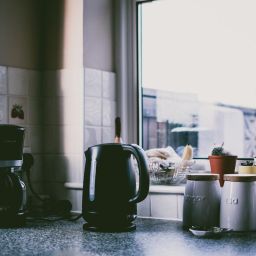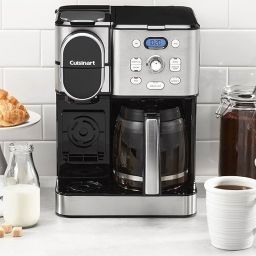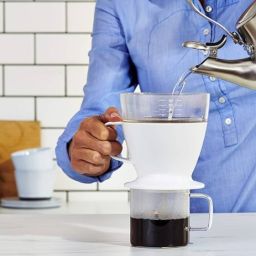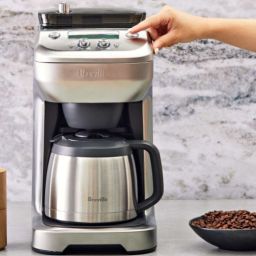
The Vietnamese Coffee Maker, also known as a Phin, is a unique treasure in the coffee world. This small, but mighty, tool is at the heart of brewing traditional Vietnamese coffee. Its simple design, typically made of metal, consists of a filter chamber, a press, and a lid.
Unlike other coffee brewing methods, the Phin gently brews the coffee by allowing hot water to slowly pass through the coffee grounds, creating a strong, rich, and flavorful cup. This method highlights the beauty of patience and simplicity in crafting a delightful coffee experience.
Key Takeaways
- The Right Coffee Grind: Using a medium to coarse grind is essential for the perfect extraction.
- Optimal Water Temperature: Water heated to between 195°F (90°C) and 205°F (96°C) ensures optimal flavor.
- The Brewing Process: A slow, patient brew highlights the depth of flavor in Vietnamese coffee.
- Serving Suggestions: Traditional serving includes sweetened condensed milk, but feel free to customize.
Step-by-Step Guide
Preparing Your Vietnamese Coffee Maker: Before you start, familiarize yourself with the components of your Phin. It includes a bottom chamber that sits atop your cup, a perforated filter press that goes inside, and a lid to keep the heat in. Preheating these components with hot water not only cleanses them but also ensures your coffee stays hot throughout the brewing process. Once preheated, discard the water and you’re ready to start brewing.
Choosing Your Coffee: Selecting the right coffee beans is crucial. Robusta beans are traditionally used for their strong flavor and high caffeine content, providing the bold taste that Vietnamese coffee is known for. Grind size matters too; a medium-coarse grind is ideal. It should resemble beach sand, allowing water to flow through at just the right pace, extracting the rich flavors and aromas. Remember, fresh is best, so grind your beans just before brewing to capture the full essence of the coffee.
The Brewing Process
Brewing the perfect cup of Vietnamese coffee with a Phin is both an art and a science. Let’s break down the steps to ensure you capture all the rich, bold flavors this method has to offer:
- Adding the Coffee: Start by placing about 2-3 tablespoons (15 grams) of your freshly ground Robusta coffee into the filter chamber. The amount can vary based on the size of your Phin and your taste preference.
- Wetting the Grounds for Blooming: Gently pour hot water (between 195°F and 205°F) over the grounds to just cover them. This initial wetting is crucial for “blooming,” allowing the coffee to release gases and expand, which enhances the flavor extraction. Wait about 30 seconds before proceeding to the next step.
- The Final Pour: After the bloom, add more hot water to fill the brewing chamber. Place the lid on top and let the magic happen. The water should drip through the coffee grounds slowly, ideally taking about 4 to 5 minutes. If it drips too fast, consider a finer grind next time; if too slow, a coarser grind might be needed.
The role of water temperature cannot be overstated—it’s key to extracting the full flavor without bitterness. Similarly, the brewing time is vital; too quick, and you’ll miss out on the depth of flavor; too slow, and the coffee may become over-extracted and bitter.
Finishing Touches and Serving
- Traditional Sweetened Condensed Milk: Before you begin brewing, add about 2 tablespoons of sweetened condensed milk to your cup. This step is what turns a good cup of Vietnamese coffee into an authentic, creamy delight. After brewing, stir well to mix the coffee with the condensed milk, creating a smooth, sweet concoction.
- Creating Iced Versions: If you prefer your coffee cold, simply pour the hot coffee over a glass filled with ice cubes. The robust flavors of Vietnamese coffee make it ideal for an iced version, offering a refreshing and potent drink perfect for warm days.
- Stirring: Whether hot or iced, make sure to stir your coffee well before enjoying. This final touch ensures that every sip is a perfect blend of coffee and sweetened condensed milk, offering a taste that’s rich, creamy, and utterly satisfying.
Cleaning and Maintaining Your Coffee Maker
Keeping your Vietnamese coffee maker clean is straightforward and essential for ensuring your coffee always tastes fresh. After each use, simply rinse the filter and components with hot water. If there are stubborn grounds, use a soft brush to gently remove them.
Avoid using detergents unless necessary, as they can leave behind residues that may affect the taste of your coffee. Regular cleaning not only extends the lifespan of your Phin but also maintains the purity of flavor in every brew.
FAQs
What is Vietnamese coffee?
Vietnamese coffee, known for its strong and rich flavor, is typically made using a Phin. This brewing method allows for a slow drip of hot water through ground coffee, creating a distinct taste that’s both bold and smooth.
What coffee beans should I use?
For an authentic taste, dark-roasted Robusta beans are recommended. They provide the strong flavor and high caffeine content characteristic of Vietnamese coffee.
Is a Phin the same as a French press?
No, a Phin is more similar to a drip coffee maker, relying on gravity to pull water through coffee grounds, whereas a French press immerses the grounds in water.
Is Phin coffee stronger than regular coffee?
Yes, Vietnamese coffee is generally stronger than regular coffee due to the Robusta beans used and the brewing method, which emphasizes a slow extraction process.
Final Thoughts
Embracing the art of Vietnamese coffee is about appreciating the simplicity and eco-friendliness of the brewing process. The Phin offers a unique coffee experience, producing a cup that’s not just a drink, but a moment to savor. Experiment with different amounts of coffee and water temperatures to find your perfect brew. Each cup is a chance to enjoy the rich traditions and flavors of Vietnamese coffee culture.








